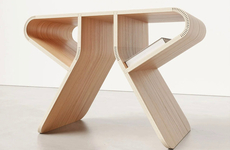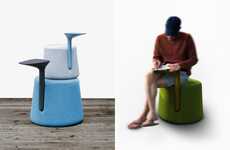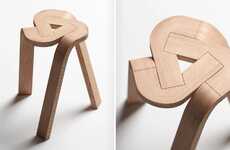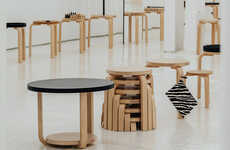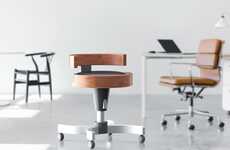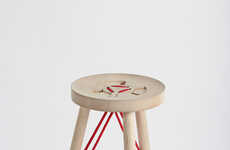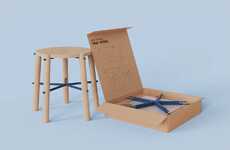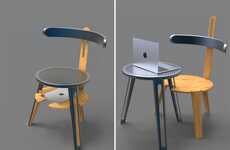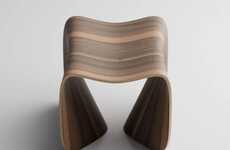
The Swish Stool Can Be Adjusted into Predetermined Shapes
Joey Haar — April 20, 2017 — Art & Design
References: carloratti & dezeen
Though made entirely out of wooden parts, the Swish stool nonetheless incorporates the same basic principles that make up the foundation of computer programming. Designed by Carlo Ratti Associati, an architecture and design studio based out of Italy, the Swish stool is made out of interlocking wooden joints that can be configured into several different shapes.
The Swish stool has 27 wooden elements precisely shaped and joined around a central hinge. These elements snap into various positions to allow for the stool as a whole to form different shapes. Beyond the chair configuration (which itself offers several different leg formats,) the Swish stool can also be flattened for easy storage or folded up to make it easier to carry. The stool is currently on display at Milan design week.
The Swish stool has 27 wooden elements precisely shaped and joined around a central hinge. These elements snap into various positions to allow for the stool as a whole to form different shapes. Beyond the chair configuration (which itself offers several different leg formats,) the Swish stool can also be flattened for easy storage or folded up to make it easier to carry. The stool is currently on display at Milan design week.
Trend Themes
1. Programmable Furniture - The concept of programmable furniture, such as the Swish stool, opens up opportunities for personalized and adaptable interior design solutions.
2. Modular Woodworking - The use of interlocking wooden joints in furniture design presents opportunities for modular and customizable woodworking projects.
3. Space-saving Designs - The ability of the Swish stool to be flattened and folded highlights the demand for space-saving furniture solutions in compact living spaces.
Industry Implications
1. Furniture Manufacturing - The incorporation of programmable elements in furniture design creates room for innovation and customization within the furniture manufacturing industry.
2. Interior Design - Programmable furniture trends offer interior designers the chance to experiment with adaptable and dynamic spaces that can be easily rearranged to suit changing needs.
3. Woodworking - The growing popularity of modular woodworking presents new opportunities for artisans and craftspeople to create unique and customizable wooden furniture pieces.
5.8
Score
Popularity
Activity
Freshness

